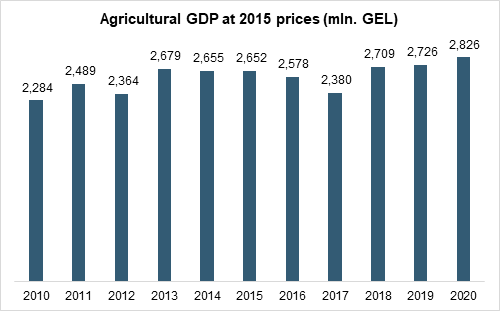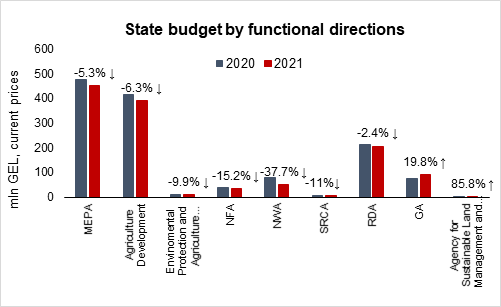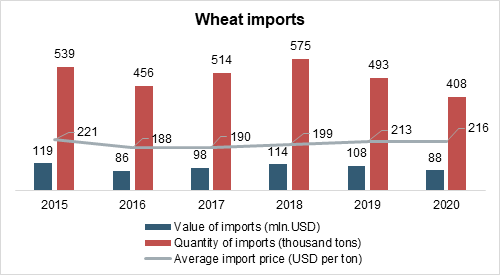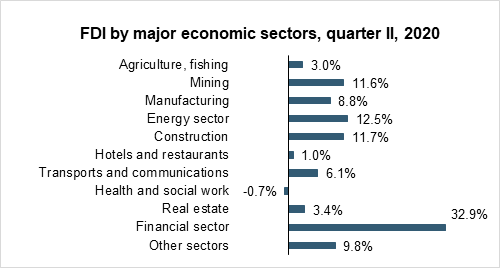- Details
On 15 June 2021, the National Statistics Office of Georgia published its annual publication for the agricultural sector - Agriculture of Georgia 2020. According to the publication, agriculture, forestry, and fishing comprised 8.4% of GDP in 2020, higher than the 7.2% share in 2019, but in line with the general trend over the last five years (agricultural GDP comprising on average 7-8% of GDP). Agricultural GDP in nominal terms increased by 13% on an annual basis. While nominally there is quite a significant increase, in real terms, the change amounted to 4%. Compared to 2019, in 2020 the production of cereals increased by 11%, vegetables – by 8%, melons, and hay of annual grasses - by 5% and 4% respectively. As for sunflower, haricot beans, and hay of perennial grasses, their production decreased by 27%, 12%, and 10% respectively.
- Details
On 29 December 2020, the parliament of Georgia approved the state budget for 2021, which includes allocations of around 18.3 billion GEL. From which the Ministry of Environmental Protection and Agriculture (MEPA) will receive 451.6 million (2.5% of the total budget allocation). MEPA will direct 10 mln. GEL towards the Environmental Protection and Agriculture Development Program (2.2% of MEPA’s total budget), with around 389.6 mln. (86.3% of MEPA’s total budget) to be allocated to agricultural development, and approximately 51.9 mln. GEL (11.5%) to be spent on environmental protection.
- Details
The COVID-19 pandemic raised concerns about the food security of many countries, in particular import-dependent developing countries like Georgia. Trade restrictions imposed by Georgia’s trade partners tightened the supply of some cereals and vegetables, signalling the risk of an increase in food prices. While there is no formal evidence of food insecurity due to the pandemic, given that Georgia is a net importer of wheat the state subsidized wheat imports, and, according to Georgia’s Wheat and Flour Producers’ Association, Georgia and the USA agreed on imports of 30,000 tons of American wheat to Georgia. 14,000 tons have already been imported, while the rest is planned to be imported by the end of the year. While diversification of import markets is highly desirable, 30,000 tons represents a rather small share from Georgia’s total imports of wheat.
- Details
The National Statistics Office of Georgia (GeoStat) recently published its economic review for Quarter II 2020. The publication highlights that agricultural production increased by 4.7% in the second quarter of the year compared to the same period in 2019. Furthermore, agriculture contributed to 10.2% of the country’s total GDP during the same period. In the second quarter of 2020, Foreign Direct Investments (FDI) in agriculture also increased and were almost six times higher than the corresponding indicator in 2019. Notwithstanding, FDI in agriculture was relatively low compared to the other sectors of the Georgian economy and accounted for 3% of the total FDI.














